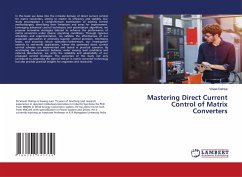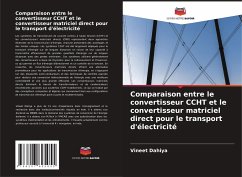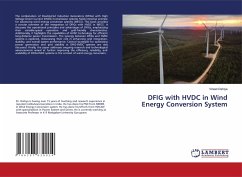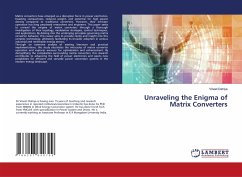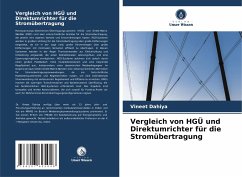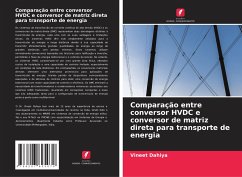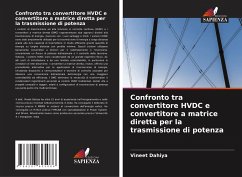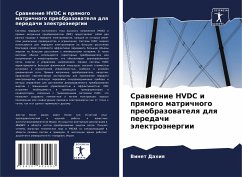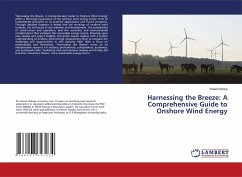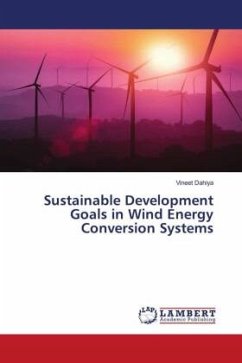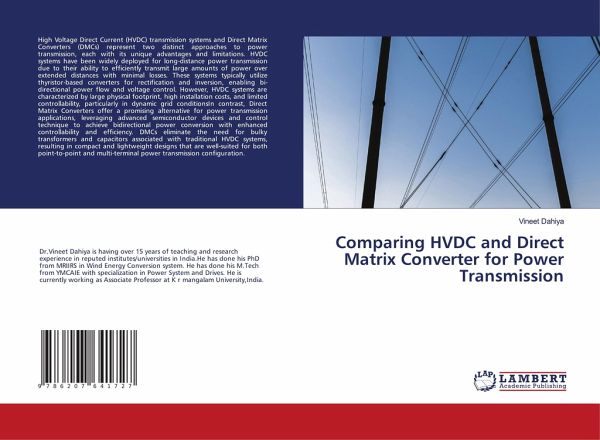
Comparing HVDC and Direct Matrix Converter for Power Transmission
Versandkostenfrei!
Versandfertig in 6-10 Tagen
29,99 €
inkl. MwSt.

PAYBACK Punkte
15 °P sammeln!
High Voltage Direct Current (HVDC) transmission systems and Direct Matrix Converters (DMCs) represent two distinct approaches to power transmission, each with its unique advantages and limitations. HVDC systems have been widely deployed for long-distance power transmission due to their ability to efficiently transmit large amounts of power over extended distances with minimal losses. These systems typically utilize thyristor-based converters for rectification and inversion, enabling bi-directional power flow and voltage control. However, HVDC systems are characterized by large physical footpri...
High Voltage Direct Current (HVDC) transmission systems and Direct Matrix Converters (DMCs) represent two distinct approaches to power transmission, each with its unique advantages and limitations. HVDC systems have been widely deployed for long-distance power transmission due to their ability to efficiently transmit large amounts of power over extended distances with minimal losses. These systems typically utilize thyristor-based converters for rectification and inversion, enabling bi-directional power flow and voltage control. However, HVDC systems are characterized by large physical footprint, high installation costs, and limited controllability, particularly in dynamic grid conditionsIn contrast, Direct Matrix Converters offer a promising alternative for power transmission applications, leveraging advanced semiconductor devices and control technique to achieve bidirectional power conversion with enhanced controllability and efficiency. DMCs eliminate the need for bulky transformers and capacitors associated with traditional HVDC systems, resulting in compact and lightweight designs that are well-suited for both point-to-point and multi-terminal power transmission configuration.



